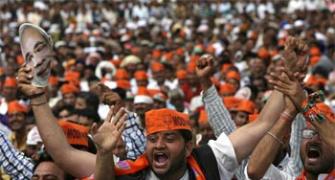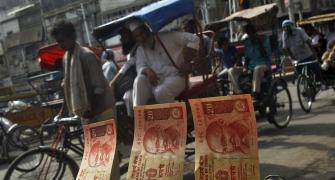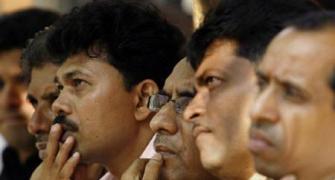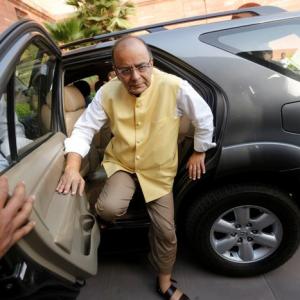Whether the Budget's public investment thrust will pay off will depend crucially on line-item execution, says Sajid Chinoy.
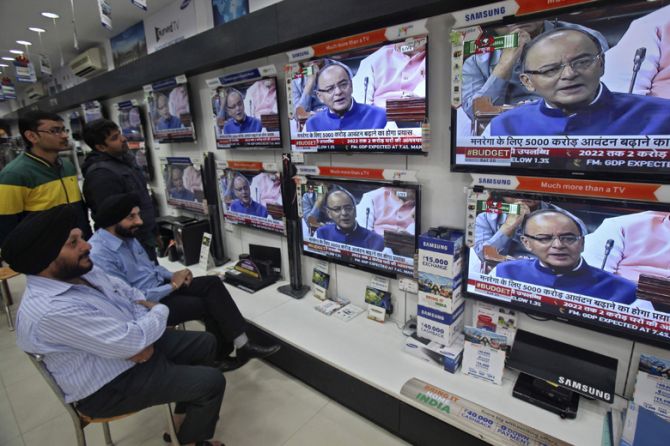 It's hard to remember a Budget that was met with as much expectation as the 2015 rendition was.
It's hard to remember a Budget that was met with as much expectation as the 2015 rendition was.
There was a universal anticipation that it would signal the government's economic vision for its first term. So, were expectations met? On institutional reform, absolutely.
A formal monetary policy framework, with a commitment to a monetary policy committee, a world-standard bankruptcy law, a public-works dispute resolution mechanism.
If implemented, these institutional advancements lay the groundwork for a modern emerging market.
But at the heart of the Budget was a gamble - a relaxation of the fiscal deficit to create space for more public investment and transfers to the states - the latter in line with the Fourteenth Finance Commission.
The case for the former is clear.
Private investment remains in a slump and balance sheets - particularly in the infrastructure sector - remain overextended.
With this kind of debt overhang, the chances of any private capex appear dim.
Public investment must endeavour to fill the slack.
So, will the gamble succeed?
In my view, whether it succeeds will come down squarely to execution this year? But why is execution unduly important this year?
First, let's recognise the changed macroeconomic backdrop.
Over the last three Budgets, fiscal policy has simply been firefighting.
The deficit was allowed to balloon during and immediately after the Lehman crisis.
And the consequences of that fiscal expansion were for all to see - inflation surged, the current account deficit ballooned, and India came perilously close to a sovereign ratings downgrade in the fall of 2012.
The primary goal, therefore, of the last few Budgets was to slash the deficit - in a bid to reduce aggregate demand and thereby external and internal imbalances.
Budgets were largely judged by whether the attempted fiscal consolidation was aggressive enough.
Of course, it would have been nice if revenues were realistically budgeted and/or capital expenditures were preserved. But these were second-order issues.
What mattered was whether the deficit target was hit, and aggregate demand reduced enough. The ends justified the means.
But the macro environment is now very different. There are no fires to be put out. India is now considered the epitome of macroeconomic stability - inflation has fallen rapidly, the current account has collapsed and the rupee is under appreciating pressures even as other emerging market currencies are under pressure. But growth remains very weak. Too weak for comfort.
So, unlike the "stability" Budgets of the last three years, this is a "growth" Budget after many years.
The Budget's primary objective, therefore, is to boost public investment in a bid to catalyse private investment.
That is the criterion on which the Budget will largely be judged, given that fiscal targets were relaxed in the process.
It's important, therefore, to recognise that the Budget's capex thrust is very diffuse.
The allocation of non-defense capital expenditure has been increased by just 0.17 per cent of gross domestic product (GDP) over what was achieved last year.
And the allocation is, in fact, less than last year's Budget as a percent of GDP.
Instead, the Budget envisions other engines firing: public sector enterprises investing in public infrastructure to the tune of 0.15 per cent of GDP, states spending some part of their net transfers from the Centre (0.4 per cent of GDP) on capex and the National Investment and Infrastructure Fund levering up.
That said, the Budget promises to arm the infrastructure fund with Rs 20,000 crore a year, though there is no explicit allocation exists just as yet.
So, a public investment boost is certainly intended. But it is largely off the Centre's balance sheet. And all engines would need to fire simultaneously.
What happens on the revenue side, however, is equally critical. Over the last three years, overly ambitious revenue projections - which would rarely materialise - have meant that capex expenditures have been the first casualty to meet fiscal targets.
In fact, on average, less than 80 per cent of the capex allocation has been met in the last three years.
From that standpoint, revenue assumptions are far more realistic this year.
But they are not a slam dunk. After making the one-off adjustments, tax buoyancy last year printed at 0.7 last year, and is budgeted at 1 this year. By no means impossible.
But it would require an appreciable growth lift. On the asset sale front - the government has been much more bold - targeting 0.65 per cent of GDP, which is unprecedented.
By increasing asset sales and capex expenditures by about 0.2 per cent of GDP each, the government has essentially delivered an asset swap - something we have long advocated.
This is very desirable. But, now, execution becomes the key.
A systematic, pro-active disinvestment plan needs to start early in the year and be appropriately staggered.
A back-loaded ad hoc programme is unlike to escape the fate of previous years. All told, the success of the Budget will be judged by how much of a public investment thrust it ultimately delivers.
And here, line-item execution becomes critical, because the margin for error is very small. If oil prices were to rise or growth, and, therefore, tax buoyancy, does not materialise or disinvestment falls short, planned capex could become the first casualty.
And we could end up in no-man's-land - a deficit of 3.9 per cent of GDP without any increase in capex.
Neither bond nor equity markets will be happy with that. Conversely, pro-active and aggressive execution has the potential to both reduce the deficit and boost public investment.
For that, however, subsidy slippages anywhere must be met by savings elsewhere. Asset sales must be embraced and not shied away from.
States must be prodded to spend and save their transfers wisely and in equal measure. And monies must be found soon for the National Investment and Infrastructure Fund.
The Budget is clearly well intentioned.
It has talked the talk. Now it must walk the walk.
Photograph: Reuters
Sajjid Z Chinoy is chief India economist, JP Morgan


